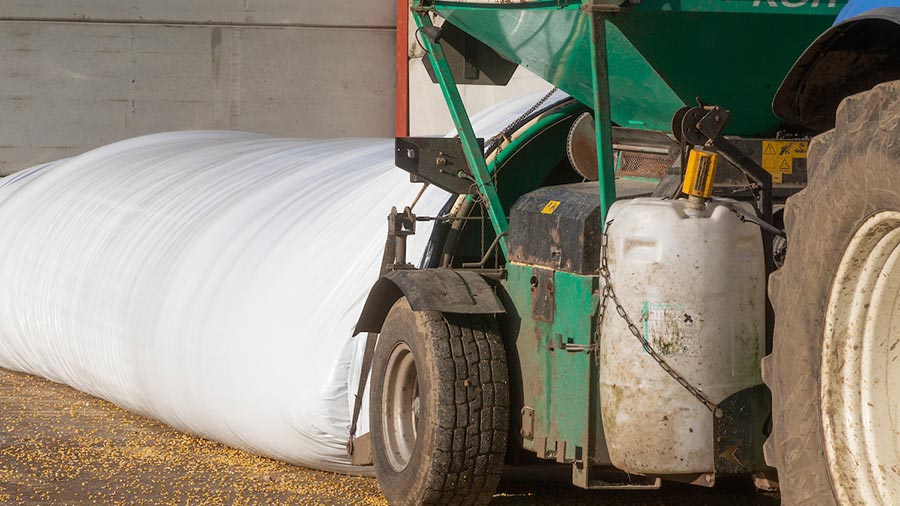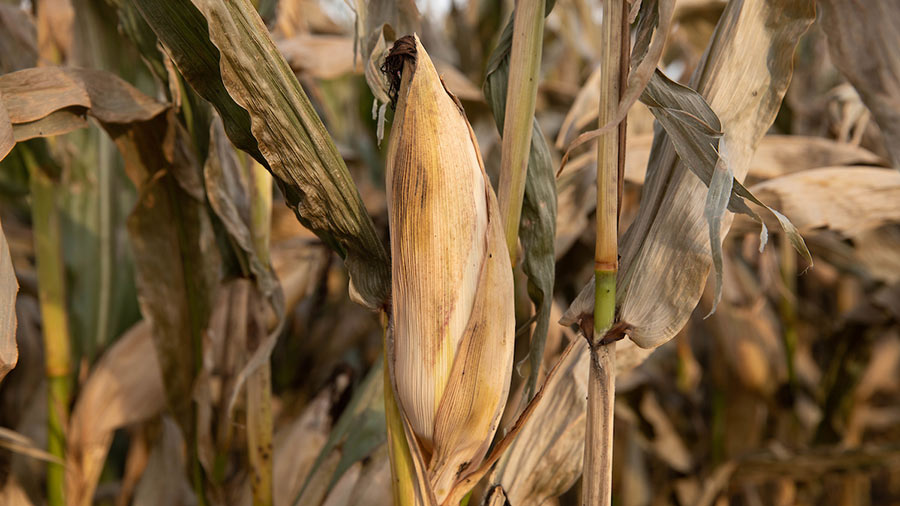Options for harvesting maize in wet conditions
 Crimping grain maize © Tim Scrivener
Crimping grain maize © Tim Scrivener A switch to grain maize could be the answer for farmers with maize crops still standing because harvest has been hampered by wet ground conditions.
This is according to Michael Carpenter, technical director of feed preservation specialist Kelvin Cave.
He says it needs a four-wheel-drive or tracked combine with a maize header, and a crimping machine to prepare the crop for easy storage, without the need for drying.
See also: 5 steps to make the most of maize in feed
“The combine will travel on a mat of shredded stalks and leaves, which is cut ahead of the vehicle, creating far less mud on tyres and roads.
“The combine can also deliver its grain to a gateway, avoiding the need for heavy trailers to traverse wet ground, and minimising soil compaction.”
Once back at the yard, the crop is passed through a suitable roller and a salts-based preservative is applied.
The rolled crop can then be used as a high-energy concentrate feed for dairy, beef and sheep, or for anaerobic digestion.
What is crimping?
Crimping involves the rolling of cereals or maize grain to break the seed coat and expose the carbohydrate and protein.
A preservative is applied to ensure a controlled fermentation and maximum nutrient retention once stored in an airtight clamp (or plastic tube) at moisture contents of 25-40%.
Crimped maize must remain sealed for at least three weeks and can then be fed throughout the year.
“The resulting crimped maize will typically have a metabolisable energy of around 14MJ/kg dry matter (DM), and more than 70% starch, providing a cost-effective option for a high-energy, home-grown feed,” he says.
Benefits of crimped grain maize
- Produces a highly digestible concentrate feed with high nutrient density
- Simple process: crimp, ensile, feed
- Typical grain yield at 30% moisture is 10-12t/ha
- No drying or specialist storage is required
- Avoids the soil contamination and compaction associated with late maize silage
- Provides high-value animal feed (or feedstock for anaerobic digestion)
- Improves animal performance (dairy, beef or sheep) over dry-rolled grain
- Backed by more than 40 years’ successful use in Finland and northern Europe
Source: Kelvin Cave
Taking late wholecrop maize silage

© Tim Scrivener
If there is no alternative to foraging wet wholecrop maize – because there is insufficient cob formation or the lack of available equipment – great care must be taken with its preservation.
Once the crop matures beyond its optimum DM of 32-35%, this becomes more challenging, explains independent silage consultant Dr Dave Davies from Silage Solutions.
“As wholecrop maize matures, so its dry matter increases, while its digestibility, energy content and total harvestable yield go into decline,” he says.
“The plant also becomes more prone to fungal infection in the field, increasing the mycotoxin risk and greatly increasing the challenge of aerobic spoilage of the silage at feed-out.”
Michael suggests using a preservative that has been formulated to deal with the challenges to aerobic stability and inhibit the spoilage organisms – including those from soil contamination – which are likely to threaten the quality of the remainder of this year’s maize harvest.
